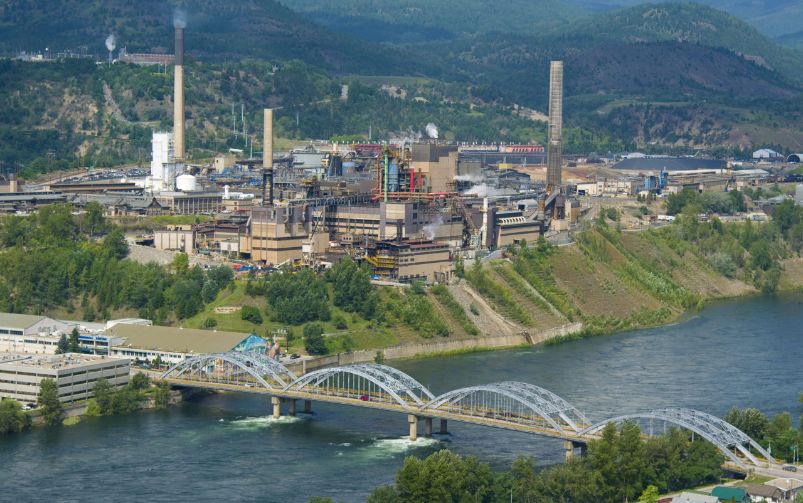Denison Mines’ Wheeler River camp in northern Saskatchewan. Courtesy of Denison Mines.
Welcome back to your weekly mining news recap, where we catch you up on some of the news you may have missed. This week’s headlines include Na-Cho Nyäk Dun Nation challenging new Yukon mining claims, Frontier Lithium commencing a feasibility study for its lithium conversion facility in Ontario, and Alkane and Mandalay merging into a dual-listed miner.
Denison Mines received provincial environmental assessment (EA) approval for its Wheeler River project in Saskatchewan’s Athabasca Basin, advancing what could be Canada’s first in-situ recovery uranium mine. The Phoenix deposit, located within the project, is the country’s largest undeveloped uranium project by tonnage. Federal EA approval and licensing hearings are scheduled for later this year, with construction expected to begin in 2026 and first production by 2028.
The death toll from a mine collapse at Codelco’s El Teniente copper mine climbed to six this week, Mining.com reported. A 4.2-magnitude earthquake in central Chile caused part of the mine to collapse on July 31. Five workers that were trapped underground were found dead over several days of rescue efforts; one worker was reported dead immediately. The mine’s underground operations have been suspended pending investigation, with Codelco seeking approval this week from Chile’s mining regulator to reopen part of the site.
The Metals Company released a technical report estimating there are more than 50 million tonnes of probable mineral reserves in deep-sea polymetallic nodules located in the Pacific Ocean’s Clarion Clipperton Zone (CCZ), Mining.com reported. In March, the Canadian miner began the process of seeking licences from the U.S. National Oceanic and Atmospheric Administration to explore and extract minerals from the CCZ. The company aims to begin production in the fourth quarter of 2027. TMC stated in a press release that the company’s prefeasibility study for the project “marks a world-first declaration of probable mineral reserves for deep-sea polymetallic nodules.”
The First Nation of Na-Cho Nyäk Dun (NND) plans to oppose any new mining claims on its traditional territory in Yukon—which spans 131,599 square kilometres in northeast Yukon—as it commences regional land-use planning with the territorial government, The Canadian Press reported. Citing treaty rights and past court rulings, the Nation said new claims during the planning process are unlawful. The warning comes a year after the catastrophic failure at the Eagle mine, located in the Nation’s territory.
Separately, the Yukon territorial government’s attempt to develop legislation that would replace the Quartz Mining Act and Placer Mining Act has drawn fire from NND and the Yukon Chamber of Mines, CBC News reported. The Nation argued the framework for the legislation ignores First Nations’ concerns and does not go far enough to revamp how mining is done in the territory. The chamber contended it would make the territory uncompetitive for mining investment.
Frontier Lithium has launched a definitive feasibility study for its lithium conversion facility in Thunder Bay, Ontario, Canadian Mining Journal reported. The facility, which would be fed by Frontier's Pakeagama lithium deposit, is expected to produce 20,000 tonnes of lithium hydroxide annually, enough for 500,000 electric vehicle batteries. Frontier hopes to have the study completed within 18 months. The project is majority-owned by Frontier, and Mitsubishi has a 7.5 per cent interest.
Australian miner Alkane Resources has merged with Canada-based Mandalay Resources, forming a dual-listed gold and antimony producer with operations in Australia and Sweden, Mining Weekly reported. The combined company, headquartered in Perth, Western Australia, will operate as Alkane Resources. With three producing mines, the company has a forecast output of 160,000 gold-equivalent ounces in 2025, rising to 180,000 ounces in 2026.
Aluminum and steel products accounted for nearly two-thirds of the US$710 million in tariffs collected by the United States on Canadian imports in June, The Globe and Mail reported. After the U.S. doubled tariffs on imports of these metals to 50 per cent, exports of unwrought aluminum and steel fell by over 11 per cent.
Second-quarter results season is upon us. This week’s releases include results from Taseko Mines, McEwen Mining, Torex Gold, Nutrien, Coeur Mining, Mosaic, Suncor Energy, Iamgold, Hecla Mining, Denison Mines, Imperial Metals and B2Gold.
British Columbia’s mining sector saw significant growth in 2024, generating $14.5 billion in revenue, including $4.4 billion from critical minerals, I reported for the August issue of CIM Magazine. Despite challenges such as global trade uncertainty, employment rose and the outlook for B.C.’s mining sector remained positive.
Mining operations are embracing advanced technologies like autonomous machinery and sensors, but their success relies on reliable connectivity, Mehanaz Yakub reported for the June/July issue of CIM Magazine. These innovations ensure continuous, high-performance networks vital for automation in both underground and open-pit mining environments.
The Tŝilhqot’in Nation, Taseko Mines and British Columbia reached a historic agreement in June that resolved a long-running dispute over the New Prosperity copper-gold project, I reported for the August issue of CIM Magazine. The Tŝilhqot’in will hold a 22.5 per cent equity stake, and any future development can only proceed with the Nation’s consent. Taseko retains 77.5 per cent but will not lead future operations. B.C. will pay $75 million to Taseko, and all related litigation has been terminated.
That’s all for this week. If you’ve got feedback, you can always reach us at editor@cim.org. If you’ve got something to add, why not join the conversation on our Facebook, Twitter, LinkedIn or Instagram pages?




